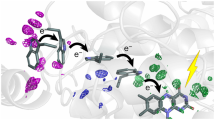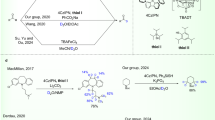Abstract
THE complex nature of the moth sensing problem has been demonstrated1–4. Here we suggest that the interaction of a moth with its radiation environment may be explained by a chemical change in metabolism induced by the radiation. We have tested this hypothesis by studying the temperature dependence of the behavioural response of several moth species to a black-light source and coherent submillimetre wave radiation.
This is a preview of subscription content, access via your institution
Access options
Subscribe to this journal
Receive 51 print issues and online access
$199.00 per year
only $3.90 per issue
Buy this article
- Purchase on SpringerLink
- Instant access to full article PDF
Prices may be subject to local taxes which are calculated during checkout
Similar content being viewed by others
References
Levengood, W. C., Michigan Academician, 1, 31 (1969).
Levengood, W. C., Z. Vergl. Physiol., 62, 153 (1969).
Eldumiati, I. I., and Levengood, W. C., Nature, 233, 283 (1971).
Eldumiati, I. I., and Levengood, W. C., J. Econ. Entmology, 65, 291 (1972).
Sacktor, B., and Wormser-Shavit, E., J. Biol. Chem., 241, 624 (1966).
Sacktor, B., and Childress, C., Archive of Biochem. Biophys., 120, 582 (1967).
Brosemer, R. W., and Veerabhadrappa, P. S., Biochem. Biophys. Acta, 110, 102 (1965).
Blakthan, N. M. G., and Lawrence, G. I., Ann. Amer. Entomol. Soc., 64, 68 (1971).
Author information
Authors and Affiliations
Rights and permissions
About this article
Cite this article
LEVENGOOD, W., ELDUMIATI, I. & FREELING, R. Nature of the Lepidopteron Sensing Mechanism: Possible Photochemical Response. Nature 241, 545–547 (1973). https://doi.org/10.1038/241545b0
Received:
Revised:
Issue date:
DOI: https://doi.org/10.1038/241545b0



